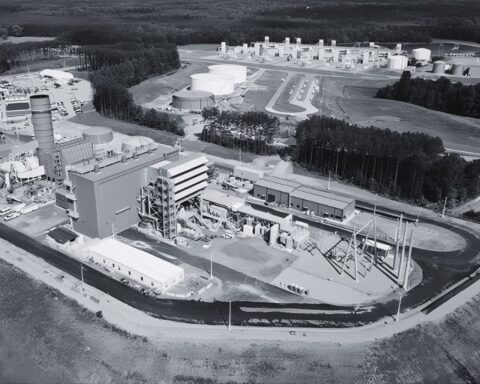The federal budget has now arrived. It’s the first under Prime Minister Mark Carney and was much anticipated by climate policy people because of the inclusion of the country’s new “climate competitiveness strategy.”
The new strategy is an important moment for action to both reduce emissions in the country and support economic competitiveness in uncertain times. It follows months of speculation and some policy signals that introduced significant uncertainty about the government’s climate commitments.
The verdict? It ain’t perfect, but the strategy is a useful step forward.
Now the government needs to quickly implement it and flesh out the details it promises. That’s critical if Canada hopes to dramatically increase investments in low-carbon projects across the country and reduce uncertainty for businesses that stalls economic development. There’s never been a more urgent time: Canada’s trading partners are accelerating their energy transitions and Canada risks missing out on big economic opportunities right when they’re needed most.
So, what are some of the central pieces of the climate strategy that are encouraging – and where are some of the biggest uncertainties?
Top on the list is the commitment to strengthen industrial carbon pricing. This is one of the most important things the federal government can do to cut emissions while keeping costs low for businesses and having virtually no impact on the costs for consumers.
That last part is critical. Misinformation about this policy has ramped up recently, and it’s worth underlining that research shows that industrial carbon pricing has negligible costs for the average Canadian. The impact is around 0% on household consumption, according to Canadian Climate Institute research. There are a number of reasons for that: the carbon price applies to large emitters only; it adds very low costs on those businesses (think a Timbit per barrel of oil); moreover, these already-low costs on industrial goods are a small fraction of the final costs for finished consumer goods.
The climate competitiveness strategy commits to fixing the industrial-carbon-pricing benchmark, which defines minimum standards for provincial systems. It also commits to strengthening the backstop, which will be decisively applied in provinces that do not meet the benchmark. In addition, the government will be setting a carbon-price trajectory that is measured in decades and sets Canadian industry on the path to net-zero emissions.
Each of these commitments is positive. But the details here will matter greatly; it’s no exaggeration to say they will make or break this policy’s effectiveness, for both Canada’s emissions and its competitiveness.
Some other highlights included a commitment to finalizing methane regulations for oil and gas, which has been a long-standing promise to slash these powerful emissions by 75% over the next five years. Canada has already made big progress here, and these are lower-cost emission reductions that provide opportunities for innovative Canadian companies to lead the charge.
RELATED STORIES:
Canada needs strong climate policy to be competitive in countries beyond the U.S.
A fork in the road for the Canadian climate change discussion
Climate disasters demand respect, but we can’t be quiet about their causes
The strategy also recognizes the importance of dramatically increasing investment into Canada’s electricity system: it commits to soon implementing the clean electricity investment tax credit and restates its commitment to the clean electricity regulations. It recommits to finalizing a national climate investment taxonomy for the financial sector by the end of 2026. And it dedicates $2 billion for a critical minerals sovereign fund to invest in critical mineral projects and companies using equity investments, loan guarantees and offtake agreements. These financial risk-sharing tools can unlock private-sector investment in Canadian projects to help seize a growing opportunity in the global energy transition.
There was nothing new on the fate of the Electric Vehicle Availability Standard, though we should hear more “in the coming weeks.” And the strategy is almost silent on climate adaptation. Investing in adaptation is not just a “nice to have”; upgrading infrastructure for extreme weather will be crucial to saving billions of dollars in costs from disrupted trade and other economic impacts, and should be a key component of any climate competitiveness strategy.
I’m often asked my opinion on how the new government is doing on climate change. My honest answer is “I’m hopeful but increasingly impatient.” Now that the government has declared its climate change intentions, it’s time to get a move on.
Rick Smith is president of the Canadian Climate Institute, the co-author of two bestselling books on the effects of pollution on human health, and the executive producer of Plastic People, a 2024 documentary chronicling the damage done by microplastics in the human body.







